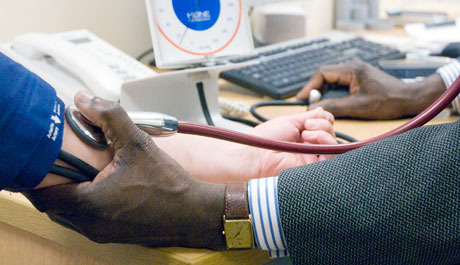NICE ‘considering’ evidence to cut treatment threshold for hypertension

Exclusive NICE is considering new evidence which led to drastically lowered hypertension thresholds in the US, Pulse has learned.
The clinical advisory body, which is currently reviewing UK hypertension guidelines with a view to updating them in August 2019, told Pulse the reviews were ‘asking the same questions’.
The new US guidelines, published by the American Heart Association, decreased the threshold for stage one hypertension from an average systolic blood pressure of 140 to 130 mmHg, and from ≥160 to ≥140 mmHg for stage two.
Researchers said the changes could mean an extra 14% of people were diagnosed with hypertension, which would bring the total number to 46% of the country’s population.
The change was prompted by the 2015 SPRINT study, which showed that by treating patients with a target blood pressure of 120 mmHg, rather than the 140 mmHg target, mortality and cardiovascular events were significantly reduced.
When asked whether the changes brought in the US would be considered in the updated UK guidelines, a NICE spokesperson said: ‘Yes, we are asking some of the same questions being considered in the US and in doing so will be considering some of the same evidence.’
Current NICE guidelines define stage one hypertension as an average blood pressure of 135/85 mmHg or higher, and stage two as 150/95 mmHg or higher. It states that doctors should ‘offer antihypertensive drug treatment to people of any age with stage two hypertension’.
If the UK were to follow the US example, many patients currently defined as having stage one and treated with lifestyle changes could be pushed into stage two and medicated.
But this comes as last year, a meta analysis of 24 studies found that the evidence for reducing blood pressure targets to below 140 mmHg in over-60s was inconsistent.
The paper said that although lowering the targets could be beneficial, they could also be linked with a higher medication burden and an increased risk of short-term issues, such as hypotension.
Cardiology expert Dr Chris Aden, a GP in Southampton, said: ‘It’s going to be challenging in terms of the numbers they’re suggesting.
‘I think it’s down to good clinical common sense in how we apply it, particularly in the elderly or more frail groups’.
RCGP chair Professor Helen Stokes-Lampard said: ‘Lowering the threshold for making the diagnosis of any condition is a significant decision, that will affect thousands, if not millions of patients, and must not be taken lightly.’
‘One concern GPs already have is overdiagnosis – where we are giving a label to a situation thereby medicalising it, and prescribing medications when the benefits to the individual patient may be very limited.
‘This can be harmful for patients both in terms of causing unnecessary anxiety, and in terms of taking medication that they might not need.’
Pulse revealed in 2016 that new evidence including the SPRINT trial had prompted NICE advisors to consider updating hypertension guidelines for the first time since they were published in 2011.
Hypertension guidelines in full
New US classification
Normal <120/80 mmHg
Elevated 120-129/<80 mmHg
Stage 1 hypertension 130-139/80-89 mmHg
Stage 2 hypertension ≥140/90 mmHg
Current NICE guideline
Stage 1 hypertension – Clinic blood pressure is 140/90 mmHg or higher and subsequent ambulatory blood pressure monitoring (ABPM) daytime average or home blood pressure monitoring (HBPM) average blood pressure is 135/85 mmHg or higher
Stage 2 hypertension – Clinic blood pressure is 160/100 mmHg or higher and subsequent ABPM daytime average or HBPM average blood pressure is 150/95 mmHg or higher
Severe hypertension – Clinic systolic blood pressure is 180 mmHg or higher or clinic diastolic blood pressure is 110 mmHg or higher
Sources: American Heart Association; NICE
Pulse October survey
Take our July 2025 survey to potentially win £1.000 worth of tokens

Visit Pulse Reference for details on 140 symptoms, including easily searchable symptoms and categories, offering you a free platform to check symptoms and receive potential diagnoses during consultations.









